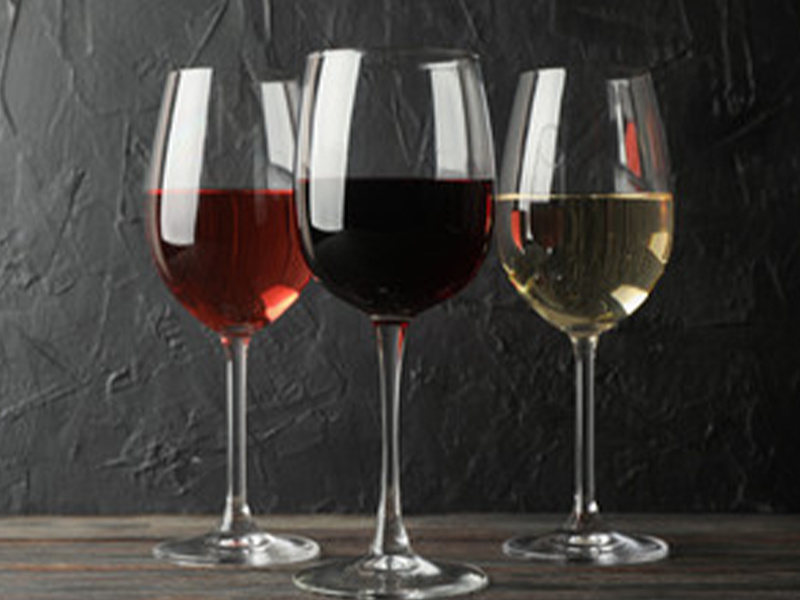The “Look of Wine”
- Posted on
- Posted in City Vino Frederricksburg VA, Red Wine, Rose Wine, White Wine
- 0

The “Look of Wine” is the first part of a multi-part blog that we’ll spread out over the next couple of months about how to taste wine. Each post will cover a different component of wine tasting. The key to beginning wine tasting is that there are no wrong answers! You can like a wine, not like a wine, or be ambivalent about it, and it’s all good. Wine preferences are subjective, even though wine scores tend to imply otherwise. Find out what you like, and don’t like, and own it. Explore outside your preferences and you may be surprised to find more wines or styles than you knew you like. The first thing you notice when wine is poured in your glass is the color. Wine Folly’s website released this graphic about wine color that is helpful in showing a wide array of shades of wine, and possible wine varieties or styles that the shade may indicate. For all wines, the grape variety itself, or the winemaking style, may produce juice that is either light or dark or somewhere in between as this chart indicates.
The first thing you notice when wine is poured in your glass is the color. Wine Folly’s website released this graphic about wine color that is helpful in showing a wide array of shades of wine, and possible wine varieties or styles that the shade may indicate. For all wines, the grape variety itself, or the winemaking style, may produce juice that is either light or dark or somewhere in between as this chart indicates.
White wines tend to turn a deeper yellow or gold color as they age due to contact with oxygen. Corks allow tiny bits of oxygen into the wine and cause this change in color over time. Think of the way an apple turns brown after being cut and exposed to oxygen. Also, a white wine that is aged in oak barrels is exposed to small amounts of oxygen, since barrels are porous; therefore an oaked white wine will have a deeper color than a wine made from the same grape that wasn’t aged in oak. Another factor in color in white wine is the climate. A white wine from a warmer climate will have a deeper color.
For rosé wines, the shade of the wine is dependent on the grape or grapes used, and the intensity of the color is based on how much time the skins of the red grapes spent in contact with the grape juice. The longer the grape skins are in contact with the juice—called skin contact or maceration—the deeper and darker the rosé will be. The time the juice is in contact with the skins is usually only a matter of a few hours to a couple of days.
When it comes to red wines, the color of the wine is determined by the color pigment in the skins—called anthocyanin—and the amount of time the juice is in contact with the skins. The longer the contact, the more pigment that is extracted. Some grape variety skins contain high amounts of pigment compounds and others not so much. Red wines will lose color as they age, turning more brick-like in color and eventually turning brown. The hue of red wine, more so than white wine, is affected by the pH of the wine. Wines that are bright red have a lower pH, which means higher acidity. If the wine has more violet color than red, it has an average pH and acidity. Finally, wines with a bluer tint have a higher pH, meaning lower acidity. Fermentation temperature impacts color, too, so red wine fermented at a higher temperature will be lighter in color than one fermented at a lower temperature.
If you hold your wine glass over printed letters and you cannot read what is written, then the wine is opaque. Usually the opaquer a wine is, the more tannic the wine is; however there are always exceptions. Wines made from Nebbiolo fall into this exception as the wines tend to be quite light in pigment, yet the wine packs a powerful tannic punch. Wines made from Gamay tend to be dark in color yet are not tannic, based on the variety itself and the style of winemaking used. If the wine in your class is not crystal clear and appears a bit hazy, it could be that the wine is faulty, or it could be that the wine is unfined and unfiltered. Fining and filtering are processes that remove leftover grape particulates among other things from the wine. Some winemakers feel that these processes also remove flavor, so they prefer to allow their wines to settle, called racking, and then remove the clearer juice from the top. They repeat this process frequently.
When you swirl a glass, something called “legs” or “tears” may appear. These lines of wine that appear to be dripping down the side of the glass are not an indication of the quality of the wine, but instead are indicative of alcohol level. This process is called the “Marangoni Effect.” To learn the science behind this process, watch this video. Wines that have sweetness may have legs that appear thicker and that run slower due to the viscosity.
Stay tuned for future blogs, covering aromas and flavors in wine

Comments
Be the first to comment...